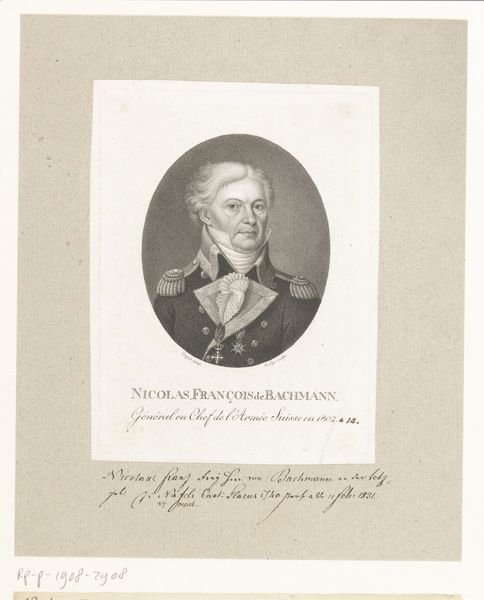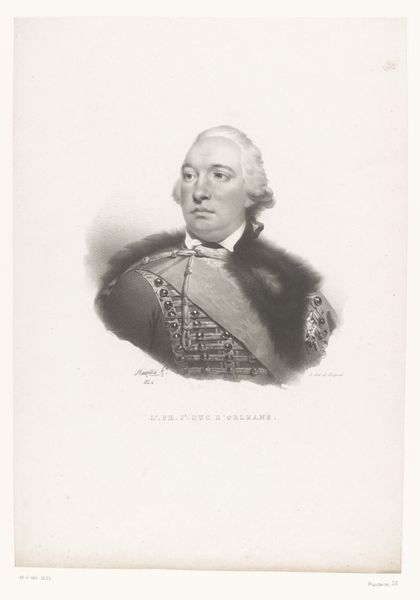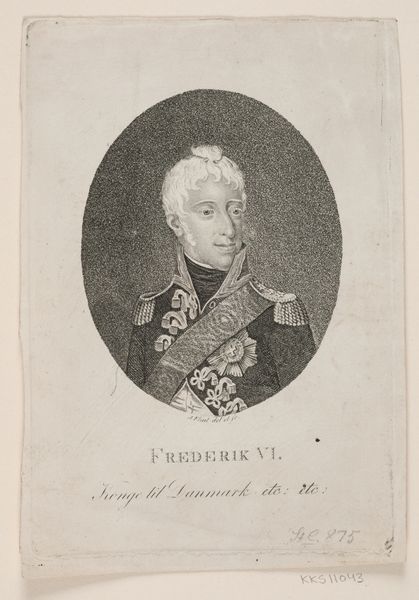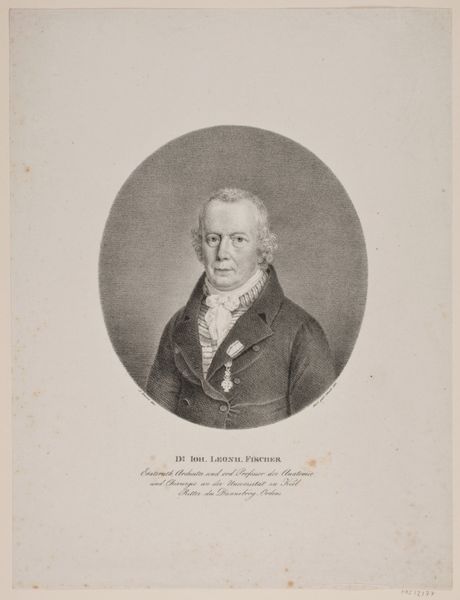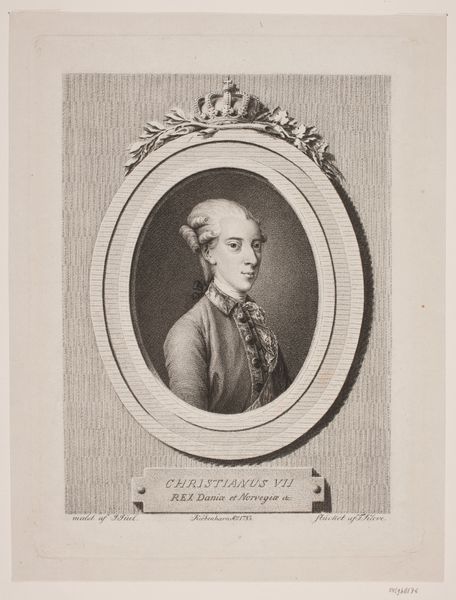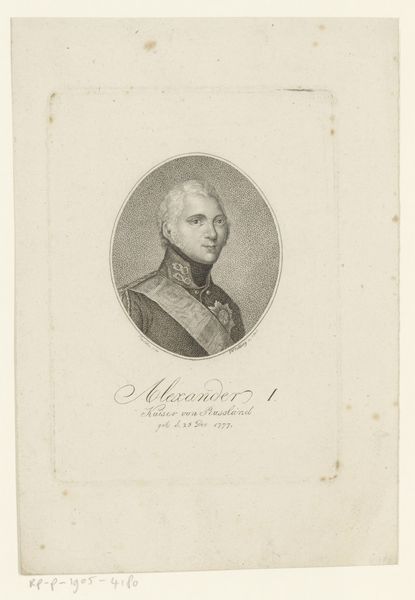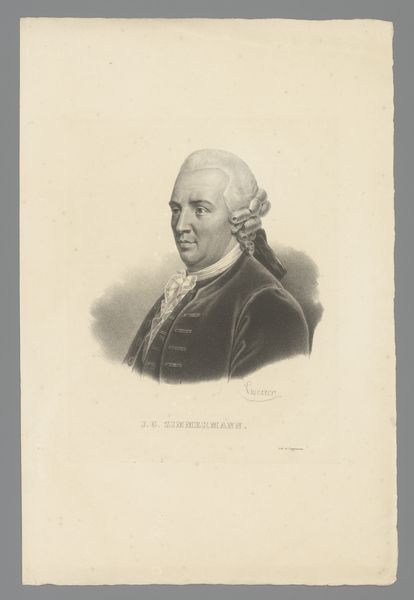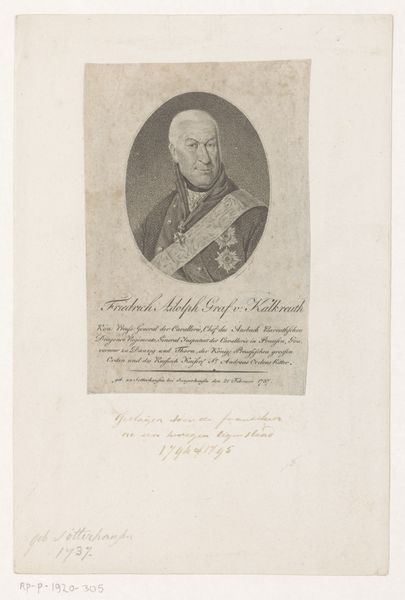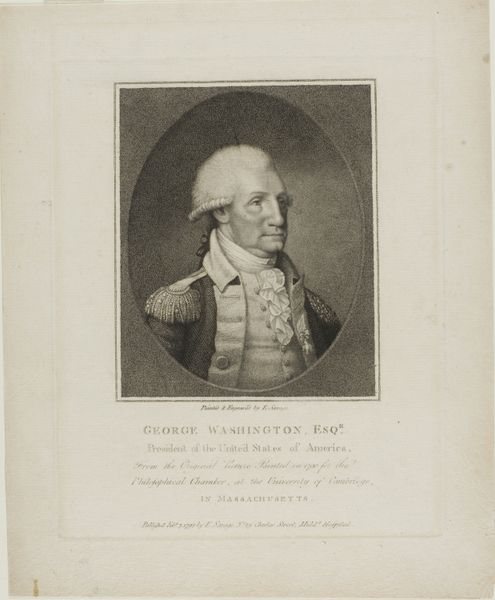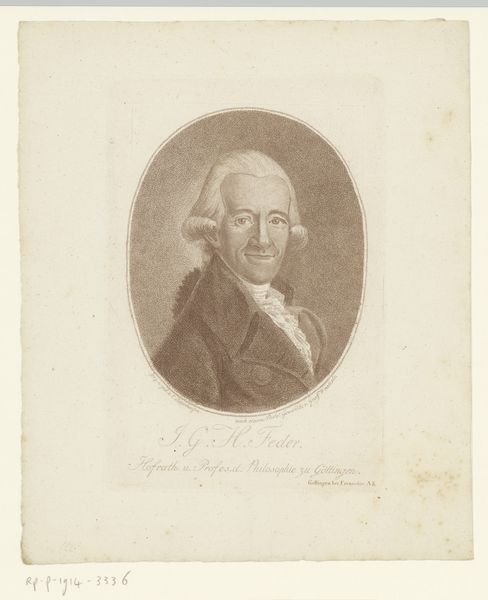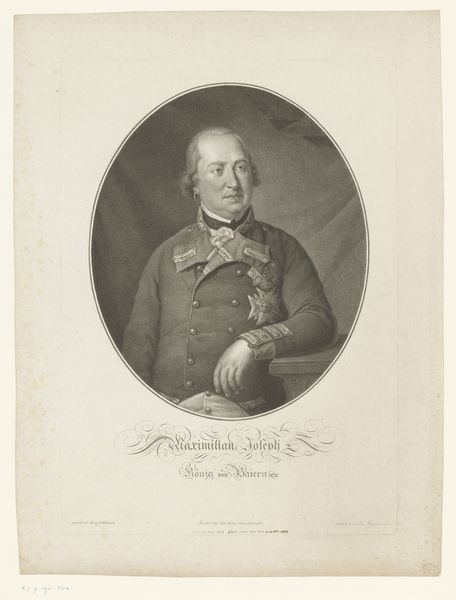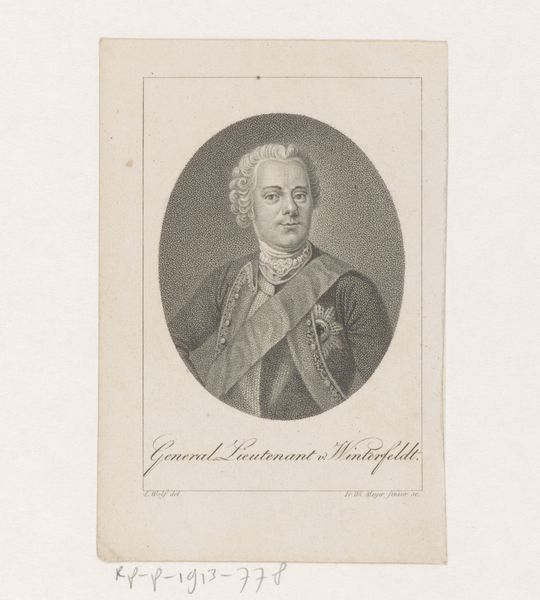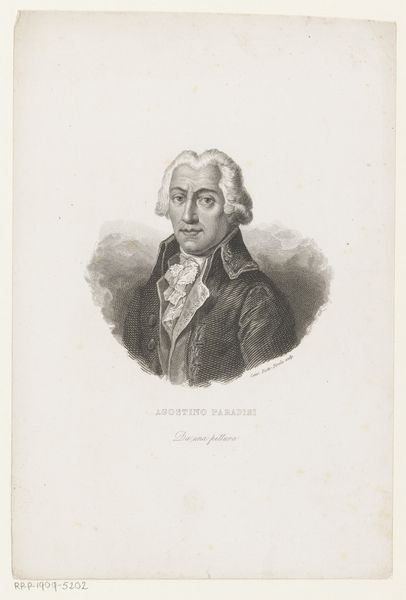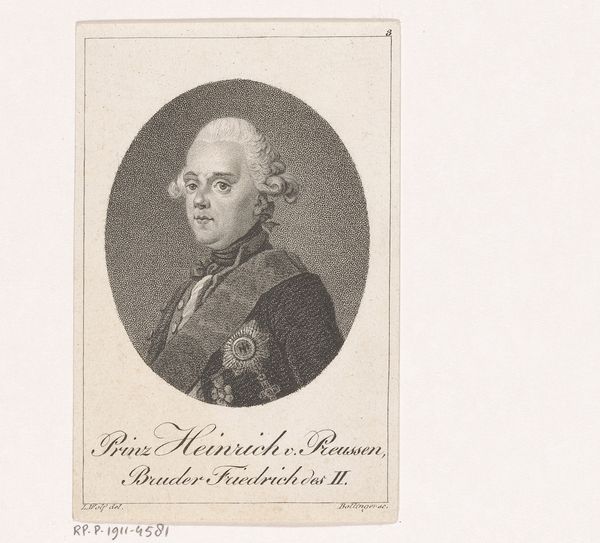
print, engraving
#
portrait
#
medal
#
neoclacissism
# print
#
old engraving style
#
classical-realism
#
history-painting
#
academic-art
#
engraving
Dimensions: height 288 mm, width 205 mm
Copyright: Rijks Museum: Open Domain
Curator: Here we see Johann Josef Neidl's print, "Portret van Aleksandr Soevorov," likely produced between 1799 and 1832. What are your initial thoughts on it? Editor: Austere. Look at the fine, deliberate lines; it speaks of order and formality. There's a tangible stillness in the engraving technique. The sitter, of course, contributes to the somber air with that stiff bearing and slightly piercing stare. Curator: The subject is, indeed, quite a figure: Alexander Suvorov, a celebrated Russian general. The print reflects the neo-classical aesthetic popular at the time. These images were vital in constructing and disseminating national heroes. Editor: Interesting! I am looking at the tools used in this process: the plate, the stylus, and the labour involved to create those sharp, definite lines on the paper. The repetitive action itself would instill a certain rigidity to this depiction, imbuing the subject with respect, even reverence. Look at those medals he is wearing. Were they added by the engraver or were they actually worn in all public appearences? Curator: His medals denote various victories, and, yes, Suvorov would have worn them, especially in formal portraits meant to project authority. It's a strategic visual language—his status made explicit for the viewing public and political circles of the time. Also notice the almost manufactured feel of the landscape outside of the oval boundary! Editor: Manufactured indeed, and there is nothing impromptu or ephemeral about its subject matter or production technique. It's built to last. All its parts --the paper, ink and technique-- seem chosen to evoke the eternal, befitting the subject, wouldn't you agree? Curator: I would, and prints such as this played a crucial role in immortalizing individuals. They weren’t just portraits; they were statements about power, legacy, and national identity in a rapidly changing Europe. Editor: A lasting reminder of craft meeting command, printed in monochrome for long and repeated reproduction! It speaks volumes, doesn't it? Curator: Absolutely, from political figure to engraving in people’s homes. Quite a journey and purpose for an image!
Comments
No comments
Be the first to comment and join the conversation on the ultimate creative platform.
